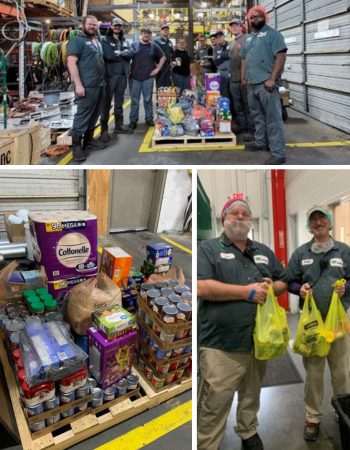Winpak has recognized World Food
Day since 2020. This year’s theme is “Right to Foods” for a better life and a
better future. The Food and Agriculture Organization (FAO) of the United
Nations has always advocated for equality in the food supply chain and for food
security. Winpak has written in the past about food insecurity along with
topics like malnourishment. By the numbers, here are some key statistics¹
related to food and the need for healthy diets.
- Over 700 million people worldwide face hunger
- Almost 3 billion people worldwide are unable to afford a healthy diet
- Climate change impacts agricultural yields and productivity
- 13% of food is lost during harvest and transport; 19% is wasted at the retail and consumer stages
It should be acknowledged that
these issues occur globally and can impact nearly all socio-economic classes.
With that context, several factors contribute to food insecurity and lack of
proper nutrition for nearly half the world’s population. Climate change, the
cost of food, and our own lifestyles are a few of the contributors. Farmers can
and do produce enough food to feed our populations. Therefore, the need is not
necessarily for more food to be produced. It is more important that we have the
right foods with nutritional needs in mind that are delivered safely to all
consumers at affordable prices.
The challenges noted by the FAO in
their recent report² tie to several global trends.
- Malnutrition – In this context, both hunger and obesity are relevant
- Loss of food diversity – Changes in agricultural practices contribute here
- Crisis regions and extreme weather events trigger displacement and poor access to foods
- Unsafe food showing up through supply chains
 Winpak employees give back to local communities
Winpak employees give back to local communities
So, as a packaging company, how
does Winpak support the goals of the United Nations and help reduce food
insecurity and ensure people get safe food where it is needed? From a social or
community perspective, Winpak sites are fully engaged in the communities in
which we operate. Winpak believes in being a good corporate citizen and helping
those less fortunate and/or facing hardship. This mindset leads our
organizations to regularly conduct food drives to support families facing food
insecurity. Our
sites throughout Canada, Mexico, and the United States have all supported their
local communities in this manner. We understand this type of action is not a long-term
fix, but it does ensure families some much needed help when adversity strikes.
On a broader basis, how else can a
company like Winpak contribute to support a better food supply chain? Winpak is
committed to reducing its impact on the climate. Our leadership and more than
2,700 employees are committed to “provide the best packaging for people and
planet”. We are focused on climate goals of reducing our energy intensity and
reducing our GHG emissions intensity a minimum of 10% by 2025. Beyond 2025, Winpak
recently committed to Science-Based Targets (SBTi) and is setting its emissions
reduction targets for validation. Winpak is also innovating to convert 100% of
its product portfolio to sustainable options. In doing so, Winpak innovates and
produces necessary flexible and rigid packaging that extends the shelf life of
perishable foods, keeping them fresher for longer. Shelf-life extension is
important to ensure food makes it to its intended end market and remains safe
to consume. It is Winpak’s intent as well that its packaging can participate in
a circular economy at its end of life.
Winpak stands with other
organizations with believing all people have a right to safe and nutritious
foods. We believe in corporate citizenship and the promotion of ethical supply
chains. Winpak also believes in the importance of necessary packaging to ensure
the food supply chain functions properly, where food waste is reduced, and
where people’s “right to foods” can be fulfilled.
¹ The State
of Food Security and Nutrition in the World 2024 (
https://openknowledge.fao.org/items/09ed8fec-480e-4432-832c-5b56c672ed92)
²
https://openknowledge.fao.org/server/api/core/bitstreams/7478e7d1-d921-4021-9e6b-d007c2dcea17/content

Author
Phillip Crowder
Director, Corporate Sustainability
Senoia, Georgia
phillip.crowder@winpak.com
Submit a comment